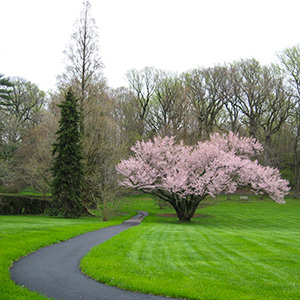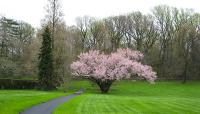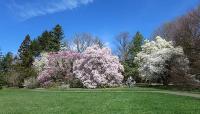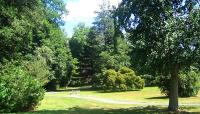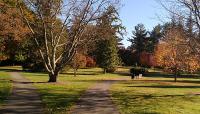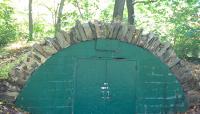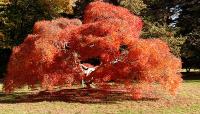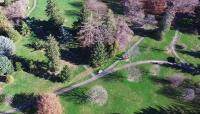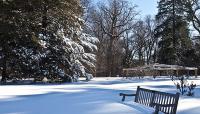Landscape Information
Located on the western edge of Princeton University, this park was once part of a 30-acre farm established in 1842 by Judge Richard Stockton Field. A founding member of both the New Jersey Historical Society and the New Jersey Horticultural Society, Field commissioned John Notman to design an Italianate villa and grounds in 1846. Although Notman’s landscape design was not implemented exactly as planned, meandering paths and clusters of vegetation were laid out. Several greenhouses were constructed in the northeast corner of the property; exotic evergreens such as larch, cedar of Lebanon, and Norway spruce were planted amidst sloping lawns; beech, hickory, oak, and rhododendron comprised a wooded area; and flower gardens, orchards, and vineyards were tended by gardener Edward Noice. In 1871 the estate, then known as Woodlawn, was sold to Susan Dod Brown. In 1887 Allan Marquand, founder of Princeton’s Department of Art and Archaeology, purchased the estate and renamed the mansion Guernsey Hall. Finally, in 1953, the Marquand family donated seventeen acres to the municipality of Princeton and, two years later, landscape architects Clarke & Rapuano developed a planning report for the park.
Over the years, additional amenities were added, including a boulder-edged sand play area designed and constructed in the early 1970s by Eleanor Forsyth. Today, with guidance from the non-profit Marquand Park Foundation, the park retains its historic character with more than 200 diverse specimens of trees, many of which are labeled and inventoried. In 1975 Marquand Park was listed in the National Register of Historic Places as a component of the Princeton Historic District.




